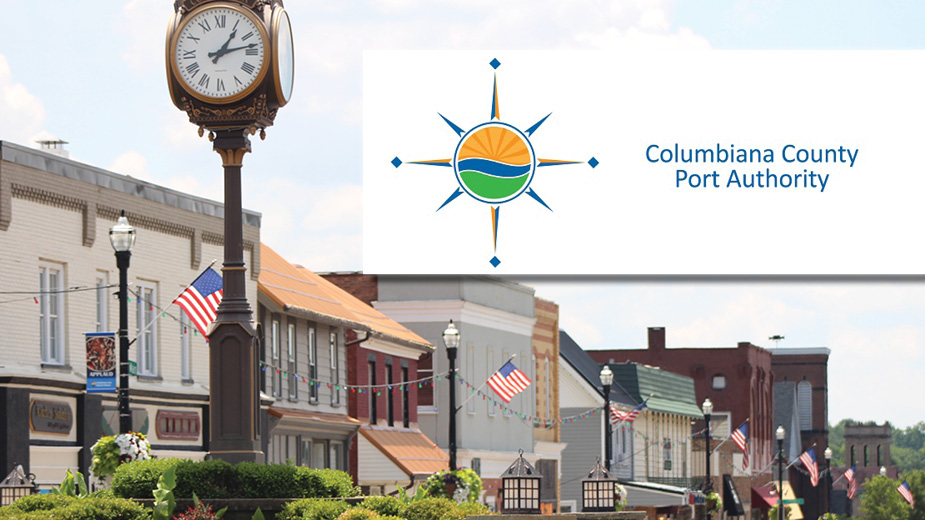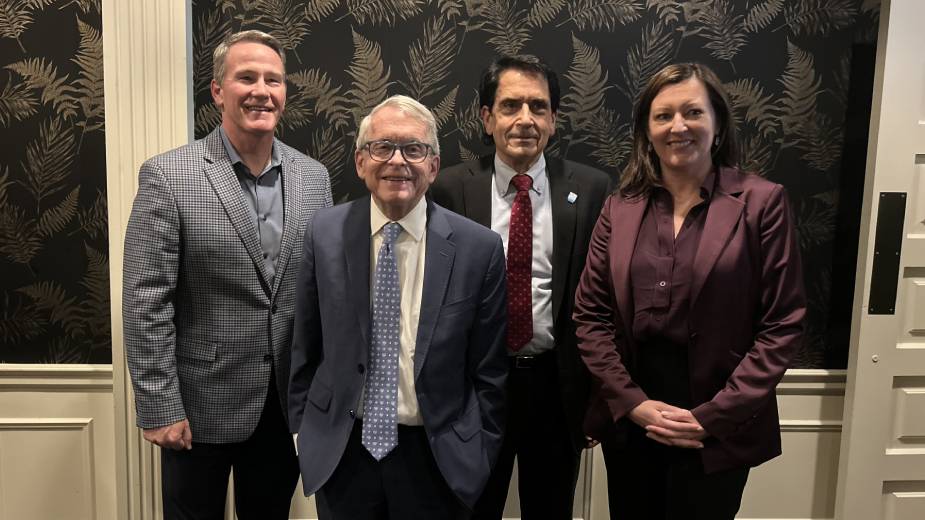Officials Get a Close Look at Mahoning River’s Impact
YOUNGSTOWN, Ohio – Development and public officials were afforded the opportunity Friday to explore firsthand an asset of the Mahoning Valley that is often overlooked: the Mahoning River.
Although many of these officials have lobbied heavily on behalf of restoring and preserving the river, few have spent time on the waterway itself.
That was the purpose of an event hosted by the Eastgate Regional Council of Governments, which invited guests on a bus tour and a short kayak trip near the B&O Station launch in Youngstown to examine the economic impact the waterway has on the community.
But first, community leaders and elected officials gathered at Eastgate’s offices downtown to hear an update of an ambitious project to remove nine dams along a stretch of river about 20 miles long from Lowellville in Mahoning County to Leavittsburg in Trumbull County.
“When you bring these dams down and allow for free-flowing water, it opens up opportunities for fish movement but also instantaneous water quality improvement,” said Craig Butler, director of the Ohio Environmental Protection Agency.
Cleaning the river improves the potential for both recreational and private economic investment along the water, Butler noted. “It draws people to the river and drives economic development. You seek kayakers coming back, they bring their money with them and creates a base of economic development in the community.”
Impeding this development are the nine dams: one in Lowellville, one in Struthers, three in Youngstown, one in Girard, two in Warren, and another in Leavittsburg. These dams were constructed between the late 19th and early 20th centuries as the industrial prowess of the region grew with the steel industry along the banks of the Mahoning.
When the industry retrenched during the late 1970s and early 1980s and the mills were abandoned, it left in its wake a heavily contaminated river and a hefty cleanup price – then estimated at more than $100 million.
Yet the river has gradually cleaned itself over the last 40 years, and total cost to remove all nine dams stands at about $27 million – about $7 million of which is already funded.
A heartening example of an improved river habitat was the emergence of the musky, an elongated predatory fish that mostly hunts in clean, clear water, said Kurt Princic, Ohio EPA Northeast District chief.
“When you’re pulling musky out of the river, it means you’ve made a turn for the better,” he said.
Work on removing the first dam in Lowellville is scheduled to begin this fall, Princic said. The cost of removing that dam, roughly $2.8 million, was funded through an Ohio EPA program called the Water Resource Restoration Sponsor Program.
The program lends money at low rates for public water projects, but uses the monies generated by the interest for water preservation efforts such as the ones underway along the Mahoning River, Butler said. The Lowellville dam removal project received interest monies from a project in Canton.
Lowellville Mayor Jim Iudiciani said that a clean river could beckon additional development along the river. An investor is already considering a condominium development along land overlooking the river in the village.
“He’s ready to build 40 units at $100,000-plus per unit along the river,” Iudiciani said. And, he said that another owner has donated two acres that the village plans to convert the property into a park and a canoe livery. “We’re very excited,” he added.
Once development along the river takes hold, Lowellville could be looked at as a model for future grant opportunities, Butler added.
A bus tour took guests to other potential investment spots along the river, including an outdoor amphitheater underway in Youngstown just west of the Market Street Bridge and to downtown Warren, which has capitalized on building its entertainment and recreational activities around the waterway.
Nearly 20 years ago, the city constructed its Riverwalk and an outdoor amphitheater to hold summer music events. Between 3,000 and 6,000 people attend concerts at the amphitheater nearly every Saturday evening during the summer months, said Mayor Doug Franklin.
“This is in the heart of our revitalization district,” Franklin said. Across the river overlooking its banks, he points to the former SCOPE Senior Services building, which is being converted into a winery.
Funding for the demolition of the Struthers dam – estimated at $2.3 million – is also complete through a combination of the sponsorship program and a settlement from LTV Corp., which once operated mills in Struthers and Youngstown, said Jim Kinnick, executive director at Eastgate. Removal of that structure is expected to begin in 2019.
An effort to remove three dams in Youngstown totaling $6 million is partially funded to the tune of about $3 million through the LTV settlement,and officials hope to begin removal by 2020.
Securing funding to remove the final four dams in Girard, Warren and Leavittsburg, presents the biggest challenge, Kinnick noted.
The largest dam and most costly to remove is Girard, estimated at $10.5 million, he said. “No funding has been set aside yet and no source sitting out there that can help us. This is really the stumbling block.”
Two dams in Warren would collectively cost $4.4 million, while the final dam in Leavittsburg’s price tag is $2.3 million, Kinnick reported.
Kinnick emphasized it’s critical that community leaders act in unison in order to secure grant monies for the remaining $20 million needed to complete dam removal and restore the Mahoning to a free-flowing river.
“What we’re doing is to try to get a unified voice,” he said. “We’re trying to speak as one with Eastgate as the project manager. I believe the communities involved along the river have been very aggressive.”
“I think we’ve got a nice plan out there,” Kinnick said.
Pictured: Ohio EPA director Craig Butler was part of a group that toured the Mahoning River with the Eastgate Regional Council of Governments Friday.
Copyright 2024 The Business Journal, Youngstown, Ohio.



